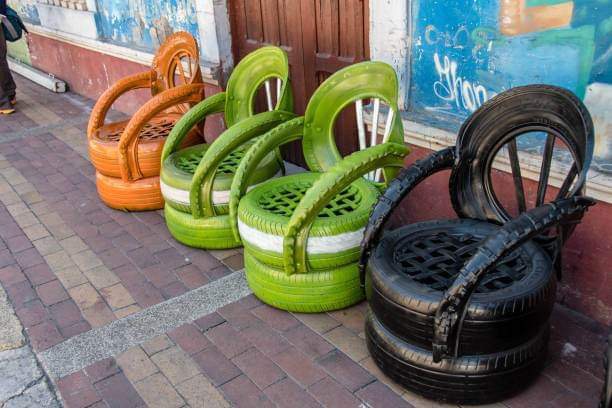Divine Word University’s Environmental Health Department, under the guidance of Willie Susuki, a lecturer at the department, has undertaken a unique beautification project utilizing old tyres.
Susuki explains that the choice of old tyres for this project stems from their versatility, ready availability, and eco-friendliness.
“When considering materials, we weighed factors like sustainability, cost-effectiveness, durability, and aesthetic appeal.”
“Tyres stood out because they can be upcycled to create various structures like benches, planters, and sculptures, reducing waste and giving them a new life.”
Susuki outlines the process involved in transforming old tyres into finished products for campus beautification, which includes collection and sorting, cleaning, and preparation, cutting and shaping, assembly and construction, and finishing touches.
He emphasizes the importance of these steps in ensuring the quality and longevity of the final installations.
“The display of recycled tyre products on campus not only contributes to the beautification effort but also aligns with broader environmental initiatives.”
Susuki highlights the significance of these installations in celebrating World Environment Day and raising awareness about sustainability and environmental conservation.
He emphasizes their visual impact, educational significance, and potential for community participation.
Additionally, beyond their aesthetic value, recycled tyre creations offer several other benefits to the DWU campus and its community, according to Susuki.
“These include environmental education, cost savings, and fostering innovation and creativity among students and faculty.”
To ensure the sustainability and longevity of the recycled tyre installations on campus, Susuki suggests implementing regular maintenance, encouraging ownership among the campus community, and planning for future expansion opportunities.
Meanwhile Susuki emphasized the main message behind this project: promoting sustainability, resourcefulness, and innovation.
He asserts that by repurposing materials that would otherwise end up in landfills, the project not only reduces waste but also encourages a shift towards more sustainable consumption habits and creative solutions to environmental challenges.

